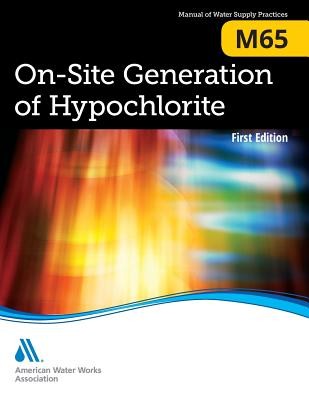
- We will send in 10–14 business days.
- Publisher: American Water Works Association
- ISBN-10: 1625760264
- ISBN-13: 9781625760265
- Format: 21.6 x 27.9 x 0.9 cm, minkšti viršeliai
- Language: English
- SAVE -10% with code: EXTRA
M65 On-Site Generation of Hypochlorite (e-book) (used book) | bookbook.eu
Reviews
Description
As more water systems turn to safer alternatives to chlorine gas, the generation of hypochlorite on site has become increasingly common. M65, On-Site Generation of Hypochlorite, presents the principles of on-site generation (OSG), the differences between low-strength and high-strength OSG systems, and the subsequent impact each of these systems has on design, construction, and maintenance for water and wastewater utilities.
M65 provides operators and engineering staff with a basic understanding of how to design and install both low- and high-strength OSG systems, how they work, and how they compare with other popular forms of chlorine currently on the market. A cost analysis and an examination of how OSG affects disinfection by-product formation are also included. This manual should help operators, planners, management, and engineers improve their decision-making processes about OSG systems using a holistic risk management approach that considers not only triple-bottom-line approaches but also the specific regional situation when choosing a chlorination system.
EXTRA 10 % discount with code: EXTRA
The promotion ends in 22d.06:45:44
The discount code is valid when purchasing from 10 €. Discounts do not stack.
- Publisher: American Water Works Association
- ISBN-10: 1625760264
- ISBN-13: 9781625760265
- Format: 21.6 x 27.9 x 0.9 cm, minkšti viršeliai
- Language: English English
As more water systems turn to safer alternatives to chlorine gas, the generation of hypochlorite on site has become increasingly common. M65, On-Site Generation of Hypochlorite, presents the principles of on-site generation (OSG), the differences between low-strength and high-strength OSG systems, and the subsequent impact each of these systems has on design, construction, and maintenance for water and wastewater utilities.
M65 provides operators and engineering staff with a basic understanding of how to design and install both low- and high-strength OSG systems, how they work, and how they compare with other popular forms of chlorine currently on the market. A cost analysis and an examination of how OSG affects disinfection by-product formation are also included. This manual should help operators, planners, management, and engineers improve their decision-making processes about OSG systems using a holistic risk management approach that considers not only triple-bottom-line approaches but also the specific regional situation when choosing a chlorination system.


Reviews